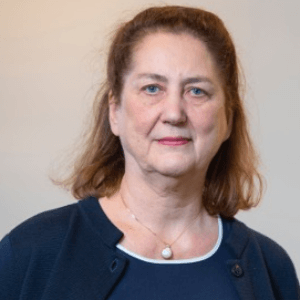Abstract:
Colorectal cancer is globally one of the most prevalent cancers and a common cause of cancer-related mortality. The curative treatment is surgery. Unfortunately, recurrence is common with approximately 25% of the patients having relapse. Lymph node (LN) metastasis is the single most important prognostic factor and a key factor when deciding on postoperative treatment. The present standard method for identification of LN metastases is histopathology, that is, microscopic examination of one or a few hematoxylin-eosin-stained tissue sections. It is an insensitive method mainly because less than 1% of the LN volume is examined. Furthermore, it gives no information on tumor aggressiveness. Thus, there is an obvious risk for misclassification with under- or overtreatment as consequence. To better identify patients at risk of relapse we constructed a qRT-PCR test, ColoNode, that determines CEACAM5, KLK6, SLC35D3, MUC2 and POSTN mRNA levels in LNs. This combination of biomarkers estimate the tumor cell load and aggressiveness allocating patients to risk categories with low (0,-1), medium (1), high (2) and very high (3) risk of recurrence.
To validate our previous finding that analysis of LNs by ColoNode gives a more accurate indication of the patient's risk of recurrence than histopathology we performed a prospective, national multicenter study including 196 colon cancer patients from 8 hospitals. All LNs examined by routine histopathology were analyzed by ColoNode in a double-blinded manner. Patients received postoperative treatment according to present guidelines using LN-status based on histopathology. On average, 21 LNs/patient, totally 4698 LNs, were examined.
At 3-year follow-up, 36 patients had died from colon cancer or lived with recurrence. ColoNode identified all patients that were identified by histopathology and in addition 9 patients who were undetected by histopathology. Thus, 25% of the patients who recurred were identified by ColoNode only. The recurrence frequency in risk group (0,-1) was only 4% suggesting that patients in this group are very likely to have been cured by surgery alone. Univariate analysis for covariation to survival showed that both the ColoNode risk group (1,2,3 vs. 0,-1) and TNM-stage III (pTN-stage III vs I/II) were strong indicators of poor prognosis with HRs of 6.84 [95% Cl, 2.37-19.71, P<0.0001] and 5.84 [95% Cl, 2.68-12.69, P<0.0001], respectively. Patients in ColoNode risk group (2,3) had very high risk of recurrence with a HR of 10.64 (P<0.001). Multivariate Cox regression analysis including factors that were examined during histopathological examination proved ColoNode as the strongest prognostic factor of all variables that were significant in univariate analysis with a HR of 4.24 [95% Cl, 1.42-12.69, P=0.01]. TNM-stage III lost its univariate significance, while lymphovascular invasion and perineural invasion proved to be independent risk factors with HRs of 2.66 and 2.52, respectively (P=0.03).
In conclusion, ColoNode successfully identified colon cancer patients at risk of recurrence, doing so with significantly higher accuracy than standard histopathology. ColoNode further allocated patients to different risk groups after curative surgery. We anticipate that ColoNode will be a most valuable tool for decisions on postoperative treatment potentially improving patient quality of life and outcome.
Audience Take Away Notes:
• Oncologists will get to know about a new way to determine lymph node status of patients who have received curative surgery for colorectal cancer by using a combination of biomarker mRNAs
• Patients will be categorized into different risk groups depending on the aggressiveness of the tumor as determined by the biomarker assay. This will help the physicians to choose a beneficial treatment modality
• Using the biomarker mRNA assay to categorize colon cancer patients into different risk groups will improve accuracy of determining lymph node status and lower hospital costs since the method can be automated



